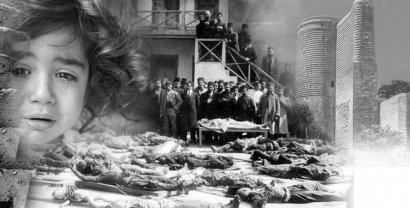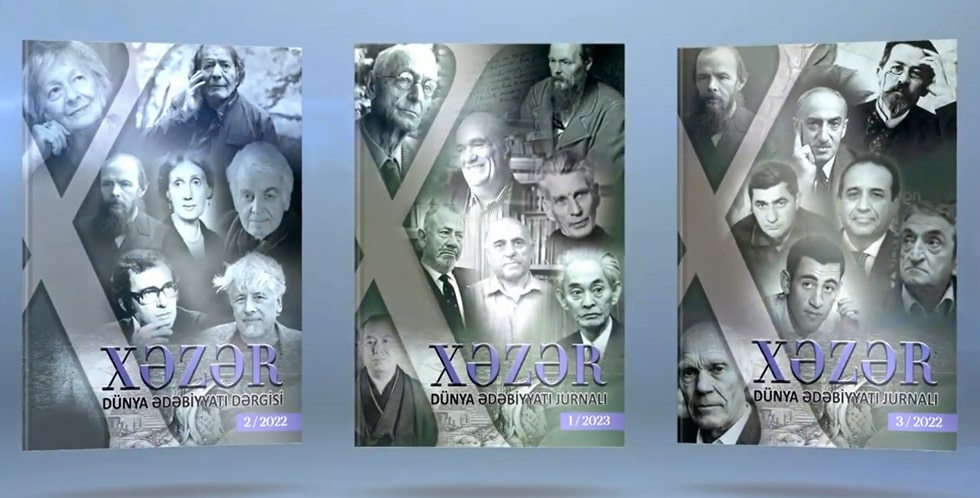March 31 Massacre in Historical Sources

More than tens of thousands of Azerbaijanis were killed in a horrific act of genocide by Baku Soviet troops led by Stepan Shaumyan and Armenian Dashnak armed units in Baku in three days of slaughter at the end of March 1918.
“New Republics in the Caucasus”, The New York Times Current History, v. 11 no. 2 (March 1920), p. 492
Michael Smith. “Anatomy of Rumour: Murder Scandal, the Musavat Party and Narrative of the Russian Revolution in Baku, 1917-1920”, Journal of Contemporary History, Vol 36, No. 2, (Apr. 2001), p. 228
The anniversaries of the massacre committed by Armenians against Azerbaijanis were marked on 31 March in both 1919 and 1920 as a national day of mourning by the Azerbaijan Democratic Republic
https://mod.gov.az/az/31-mart-azerbaycanlilarin-soyqirimi-gunu-413/
Immediately after the October Revolution in 1917, according to the leader of the Russian Bolsheviks Vladimir Ilyich Lenin’s order, the Baku Soviet was established under Stepan Shaumyan’s chairmanship in the oil-rich Baku province. Russian Bolsheviks and Armenian Dashnaks seized power in Baku, disarmed a small number of Muslim armed formations and perpetrated massacres, violence and terror against Azerbaijanis in Baku.
The massacre of peaceful Muslims by Armenians was partially slowed down when the 36th Turkestan Regiment, warships ‘Ardahan’ and ‘Krasnovodsk’ approached the port in the eastern part of the city. In a letter to the Council of People's Commissars of the RSFSR dated April 13, 1918, Shaumyan wrote: “In the battles in Baku on March 30-31 and April 1, the Soviet Red Army, a well-organized army with international team, Red Navy and Armenian national military units fought on our side. Furthermore, three-four thousand Dashnaktsutyun fighters were also at our disposal.”
Articles and speeches of the Bolshevik Extraordinary Commissar for the Caucasus, 1924, p. 224
Seyid Jafar Peshavari, the future leader of the National Movement of South Azerbaijan, wrote in his article “The Fate of the First Soviet Government in Baku”: “I saw with my own eyes the atrocities of the Dashnaks, the murder of countless innocent people, especially neutral Iranians and burning the bodies in caravanserai. It was a very tragic and disgusting act. The crime committed by the Dashnaks unreasonably, only out of hatred and enmity, upset and pained everyone.
http://tarixinstitutu.az/personalities/view/109
According to the report of the Special Investigation Commission collected from hundreds of eyewitnesses under the Azerbaijan Democratic Republic (ADR), well-trained and well-armed Armenian armed groups using guns attacked Azerbaijani houses in Muslim-populated districts, killing the inhabitants, including the old, children and women, stabbing and bayoneting them, burning their houses, throwing the children into the fire and bayoneting three- or four-day-old babies. Eyewitnesses said that in addition to massacres against Muslims, Armenians plundered their property. The bodies 57 Muslim women thrown into pits were dug up long afterwards. Their ears and noses had been cut off and they had been bayoneted in the abdomen.
http://www.milliarxiv.gov.az/en/fovqelade-tehqiqat-komissiyasi
In those days the Armenian-Dashnak and Russian-Bolshevik military forces of the Baku Soviet destroyed ancient historical buildings and architectural monuments of the city, and caused great damage to public and private buildings. The editorial offices of Achiq Soz and Kaspi newspapers, hundreds of buildings, including the Tazapir and Shah mosques, the Ismailiyye building, the 14th-century Keyqubad mosque adjacent to the Palace of Shirvanshahs, as well as the Alexandria, Dagestan, and Islamiyye hotels were set ablaze.
The genocide spread throughout other regions of Azerbaijan. On March 18, nearly 2,000 Dashnaks armed with artillery and machine guns heading from Baku to Shamakhy, completely destroyed 15 Muslim-populated villages along the way, then laid siege to the city and brutally killed thousands of Muslims. A member of the Emergency Investigation Commission, A. Novatski, said in a report that he had hardly found few survivors for testimonies in Shamakhy, which was completely destroyed in the summer of 1918.
http://elibrary.bsu.az/yenii/ebookspdf/Qm3tZMW0.pdf
“Azərbaycan” qəzeti (rus dilində), “Şamaхının son günləri”, 30 mart 1919-cu il
All who led the massacre in Shamakhy were Armenians - Stepan Lalayev (Lalayan), Gavril Karaoglanyan, Gulbandyan, Mikhail Arzumanov, Karapet Karamanov, Shushintsa Aghamalova, Samuil Daliyev, Petrosyants and local Armenian armed bands in Shamakhy.
Məhərrəm Zülfüqarlı: Şamaxı soyqırımı, 1918, Shamakhy genocıde
According to archive materials, the Armenian gangs annihilated nearly 15,000 -20, 000 Azerbaijanis in Baku, 7, 000 in Shamakhy, and 6,000 in Guba. It was impossible to determine the number of murdered people in Salyan, Navahi, Lankaran and Kurdamir districts. The reason of this was the suspension of the investigation by the Bolsheviks, who seized power after the overthrow of the national government.
https://az.wikipedia.org/wiki/Mart_soyqırımı
On March 26, 1998, President of the Republic of Azerbaijan Heydar Aliyev signed a historically-important Decree “On the genocide of Azerbaijanis” to proclaim March 31 as the Day of Genocide of Azerbaijanis.
http://www.e-qanun.az/framework/4684
AND OTHER...
-
 Book “Fuzuli’s Creativity” by Mir Jalal Out in Jordan
Book “Fuzuli’s Creativity” by Mir Jalal Out in Jordan
The book “Fuzuli’s Creativity” by the famous Azerbaijani writer and literary scholar Mir Jalal, which tells about the works of the brilliant Azerbaijani poet...
-
 Yusif Vazir Chamanzaminli’s Creativity in the Israeli Literary Magazine
Yusif Vazir Chamanzaminli’s Creativity in the Israeli Literary Magazine
“Artikl”, the popular Israeli literary magazine, has posted in Russian an excerpt from the novel “In the Crossfire” by Yusif Vazir Chamanzaminli, the outstanding...









